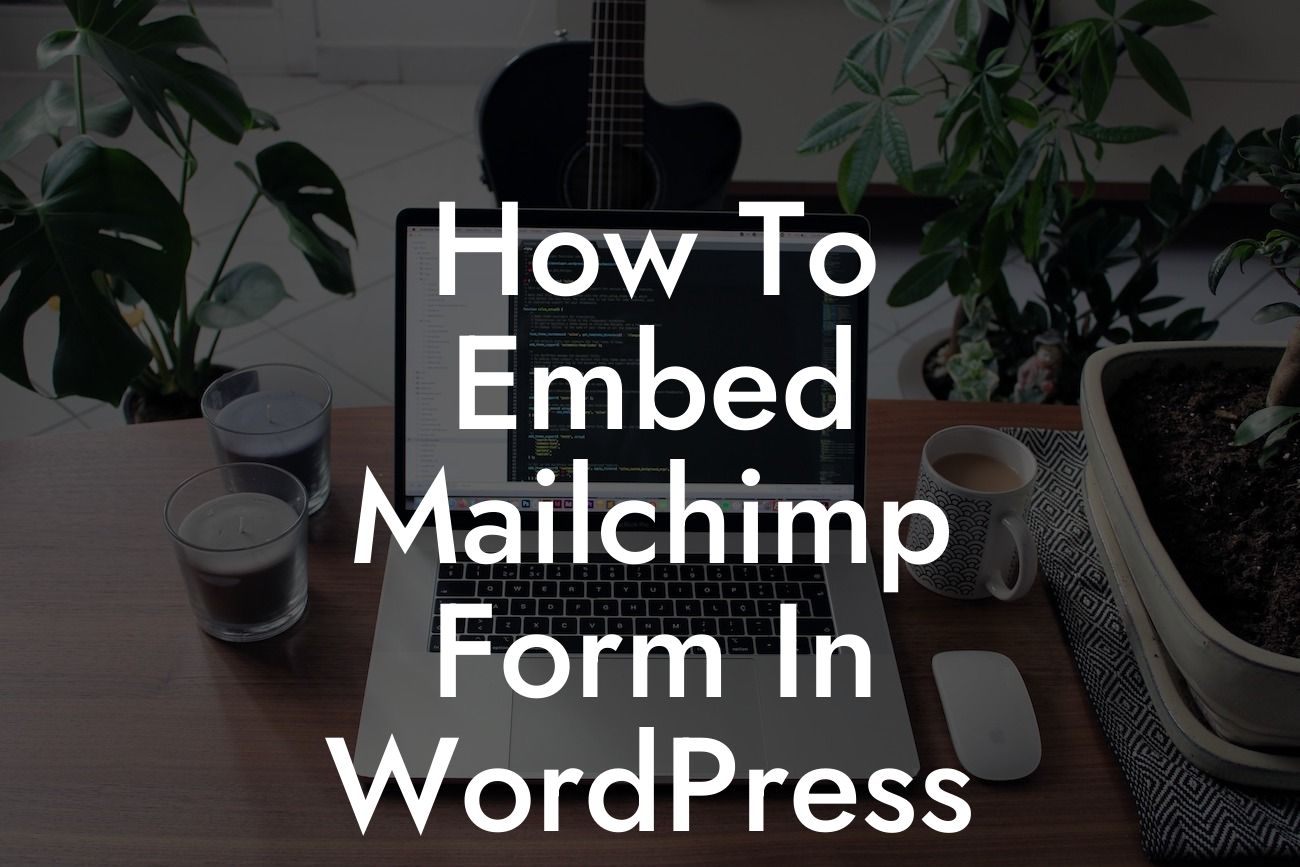Are you looking to expand your email marketing strategy and enhance your WordPress website? Look no further! In this guide, we will show you how to effortlessly embed a Mailchimp form in WordPress, ensuring a seamless integration that will help you boost your online presence and connect with your audience like never before.
Setting up a Mailchimp form in WordPress may sound intimidating, but fear not! We have broken it down into simple steps for you to follow. Let's dive in:
1. Register for a Mailchimp Account:
Before integrating Mailchimp into your WordPress website, you need to create an account on Mailchimp's website. Registration is quick and straightforward, and you can choose a free or paid plan based on your needs.
2. Install the Mailchimp for WordPress Plugin:
Looking For a Custom QuickBook Integration?
To seamlessly integrate Mailchimp with your WordPress website, you'll need the Mailchimp for WordPress plugin. Navigate to your WordPress dashboard, go to Plugins > Add New, search for "Mailchimp for WordPress," and click "Install" and then "Activate."
3. Connect Mailchimp with WordPress:
After successfully installing the plugin, go to "Mailchimp for WP" in your WordPress dashboard. Click on the "Connect" button and follow the prompts to authorize the connection between Mailchimp and your WordPress website.
4. Create a Mailchimp Form:
Once connected, it's time to create your Mailchimp form. Click on "Forms" in the Mailchimp for WP menu and select "Add New." Customize the form fields, design, and settings according to your preferences. Experiment with various options to optimize user experience and encourage more sign-ups.
5. Embed the Mailchimp Form:
After designing your form, copy the shortcode provided by the plugin. You can then go to the desired page or post in WordPress and paste the shortcode into the content area. Preview your page or post, and voila! Your Mailchimp form is now embedded.
How To Embed Mailchimp Form In Wordpress Example:
Let's say you run a small business selling handmade crafts. You want to collect email addresses from interested customers to build your mailing list for upcoming product launches and promotions. By embedding a Mailchimp form in your WordPress website, visitors can easily subscribe to your newsletter and stay informed about your latest creations.
Congratulations! You have successfully learned how to embed a Mailchimp form in your WordPress website. By utilizing this powerful integration, you can grow your email list, engage with your audience, and drive your small business or entrepreneurial venture to new heights. Be sure to explore more guides on DamnWoo and supercharge your online success with our incredible WordPress plugins. Give them a try today and experience the extraordinary firsthand! Don't forget to share this article with fellow entrepreneurs who would benefit from this knowledge.













